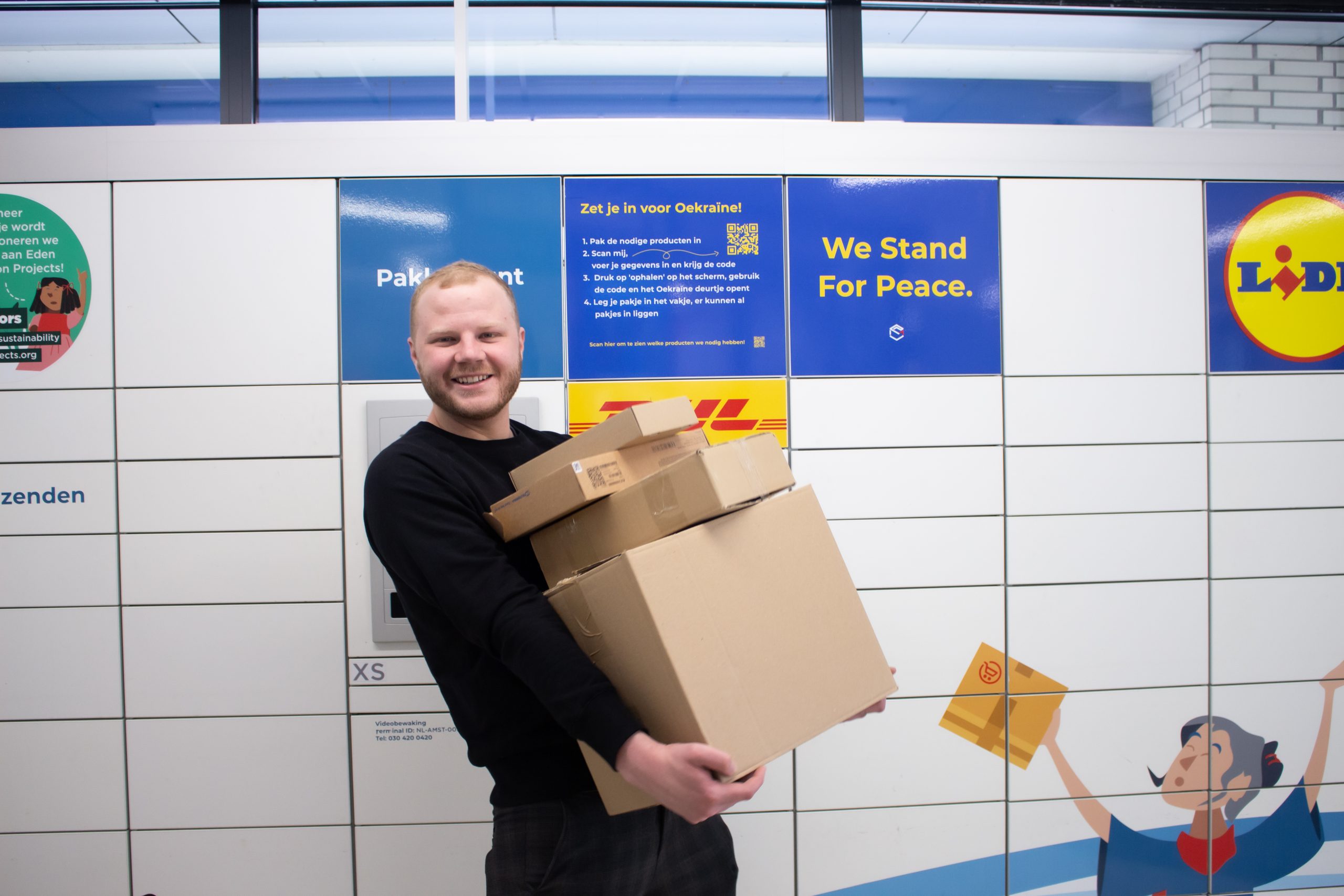In times when new technologies such as self-learning optimization software and AI are leading innovation, we wonder how we could use similar intelligence to transform our industry—especially seeing that while Lockers are great for future-proof OOH delivery, they have challenges of their own. Lockers have limited space, and especially shared lockers are unpredictable. As a result, couriers cope with parcel overflow, which causes inefficient re-routing of parcels, resulting in higher CO2 emissions and increased costs. For customers, full lockers are also frustrating. Space for in-door lockers is also not endless. We have to look at how we can optimize the locker space and use each compartment best. It got our R&D heads spinning; could we expand our software with an intelligent locker capacity feature?
In this article, you get a glimpse into our thought process. A well-thought-out reservation feature that maintains the agnostic nature of the system can lead to a future of truly smart capacity optimization.
The base for a locker capacity feature lies in empowering smart capacity booking
Let’s start our brainstorming from a simple base: What if we developed the ability to reserve compartments? One of the biggest advantages of reserving is the ability to plan what to deliver. By allowing couriers to announce their parcels ahead of time and reserve part of the locker space, they know exactly which parcels to take where before departing from sorting centers. By securing reservations, we can prevent instances of overflow. This means fewer instances where parcels need to be redirected to different locations, thus streamlining the entire delivery process.
Moreover, when we use lockers efficiently through the capacity reservation, it can prevent out-of-route kilometres. Couriers can plan their deliveries with certainty, ensuring that they do not waste time and resources on unnecessary detours. This optimized route planning reduces the carbon footprint of the entire delivery process, leading to lower CO2 emissions and a positive impact on the environment.
How to maintain the agnostic nature of a locker when developing a locker capacity feature
For agnostic parcel lockers, maintaining their neutral nature is the most important. In developing a reservation feature for agnostic lockers, we have to make sure that it does not compromise the shared nature of the system and treats all connected partners fairly. Here are some key considerations for our design brainstorm.
- The reservation feature should follow industry standards to ensure compatibility with all major courier services.
- The announcements of parcel loads should be timed fairly, or we should realize a type of split within the system set to a maximum amount of compartments reservable per operator.
By following widely accepted protocols and levelling / partly restricting reservation freedom, we can protect the agnostic nature of the lockers, allowing seamless integration with diverse courier networks.
What else?
- Data security, of course. The software should have the ability to set up clear data separation and a locker space split. Not only to uphold GDPR standards but also to ensure innovations in retail or sustainability can continue to be part of the locker ecosystem. In a way, we have to allocate a suitable amount of space and compartments per service or feature.
- The reservation feature should be designed to accommodate future advancements in technology and capacity optimization. A scalable and adaptable design ensures that the system remains relevant and functional as the delivery landscape evolves.
Last of all, what about consumers? If all compartments are reserved and thus blocked for use, customer experience plummets.
- Compartments reserved yet empty should be categorized per courier company. The empty compartments should remain accessible for customers’ returns or shipments. Reservations should also be kept for only a limited amount of time.
With the base considered, let’s add a dash of innovation.
The integration of capacity reservation in agnostic lockers is just the beginning of our journey toward smarter capacity optimization. As the technology evolves, our R&D heads are already spinning up a 2.0 version of our capacity feature that considers various factors for an even better ecosystem. What could we have our system learn and track to optimize itself over time?
- Predicting consumer behavioural patterns: Setting up advanced machine learning algorithms to analyze consumer behaviour and predict peak usage times. By understanding when lockers are most likely used, the system can allocate capacity accordingly, reducing the risk of overflow. It could also send timely suggestions for a better split of reservation requests.
- Inter-ecosystem communication. Instead of looking at locations in isolation, we should approach capacity management as a network tool. Having locations share capacity updates dynamically. The system could come up with alternative distributions of parcels to create the optimal level of capacity guarantee. These suggestions could incorporate consumer feedback either given in advance at check out or requested in real-time.
- Courier schedules: Integrating real-time courier schedules enables the system to optimize the delivery routes based on courier availability and workload, further streamlining the delivery process.
- Integrating traffic updates and route planning: Incorporating live traffic updates and intelligent route planning can help couriers avoid congested areas, reducing delivery time and CO2 emissions.
- Weather forecasting: Imagine we could protect our customers from biking through the rain. Systems could suggest the best time frame to pick up parcels with the lowest chance of needing an umbrella.
- Overselling capacity especially optimized around the peak season: A truly smart capacity optimization system can ideally oversell capacity based on historical usage patterns and predictive models. This approach minimizes instances of unused capacity and maximizes locker utilization, benefiting both courier companies and locker operators. Especially during the peak season, we have to use our machines the best we can.
Will it be worth it? Benefits of launching capacity reservation or optimization features across an ecosystem of agnostic lockers
Having a network of agnostic lockers across a city, all utilizing the same technology and capacity reservation feature, offers huge advantages:
Seamless capacity sharing: A network is stronger when connected. With capacity data sharing among lockers, an overflowing locker can automatically suggest forwarding overflow to nearby lockers within the ecosystem. This ensures that no parcels are left stranded, providing an unmatched reliable service.
Resource optimization: Shared data enables better resource management, allowing locker operators to allocate resources efficiently and cater to varying demands in different areas, for example, retail solutions.
Optimal revenue potential: By implementing capacity intelligence across a network, the network can reach its highest capacity potential, and so increase the revenue of network operators.
Enhanced user experience: There is nothing more frustrating than having your parcel re-routed to an inconvenient location or postponed for delivery. If we part-eliminate these events and, where impossible to eliminate, notify the customer in time, maybe even ask for their preferred re-direction location, we can achieve unmet customer satisfaction, encouraging more consumers to use these smart lockers for their deliveries.
All in all, with the proper consideration, a deep understanding of how locker networks work and are used, and a dash of tech brilliance, we could build a better ecosystem.
Do you have some final words? Well… yea
Developing a locker capacity feature in agnostic parcel lockers is the next best step towards smarter capacity optimization in last-mile delivery. It pushes beyond the boundaries of lockers (something we love doing at Smartmile). By reducing parcel overflow, re-routing, and CO2 emissions, the reservation feature could bring undeniable benefits to courier companies, consumers, and the environment.
We are thrilled to share that we have secretly started on this journey. But this is, of course, incredibly secret stuff;). Learning lots from our Courier partners, we started out developing unique system capabilities for our secret sauce. With this article, you get a glimpse of what is going on inside our magic minds.
Let’s join forces and embrace the power of modern technology, break free from the constraints of the past, and create a future where delivery is a true asset to us all. Follow our updates on Linkedin or read our past blog posts to bridge the time!




